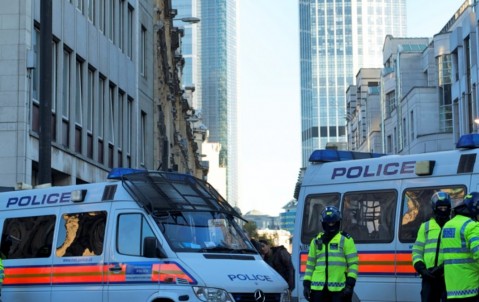
Ten years on from 7/7, terror threat to businesses has changed
This month's commemoration of the July 7 London bombings and recent attacks in France, Tunisia and Kuwait show how Islamic terrorist tactics have changed.
Today, the terrorist threat is less predictable, and more diverse – but potentially just as disruptive for businesses.
Unlike the July 7 attacks, in which 52 people were killed in the bombings of three Tube trains and a bus, there was no coordination of the three attacks last month, says Control Risks. Islamic State (IS) only carried out the Kuwaiti mosque bomb – although there is evidence it provided support or at least inspiration for the other two.
The attacks in France, Tunisia and Kuwait followed the trend in recent years in which terrorists have shifted away from large, spectacular attacks against high-profile targets to isolated attacks carried out by one or a small handful of assailants.
The shift in tactics mainly reflects improved counterterrorism efforts from Western governments, says Jonathan Wood, Associate Director of Global Issues in Control Risks’ Global Risk Analysis team. “Large scale or transnational attacks have become much more difficult to plan without detection and execute without disruption.”
MI5, Britain’s domestic intelligence agency, has virtually doubled in size since the July 7 bombings a decade ago, while in recent months the authorities in Australia and Germany claimed to have thwarted major terror attacks.
But although the threat of a major attack has receded, the danger has increased of ‘lone wolf’ attacks that are more difficult to detect and stop.
“The attacks we’ve seen recently have specifically targeted people, rather than assets or buildings,” says Ben Wakeham, a terrorism underwriter at Hiscox London Market. “IS, and the groups associated with it, sees taking lives as a much more effective way of creating fear and affecting the popular psyche than major symbolic attacks, such as 9/11 or 7/7.”
Terror threat to businesses
This changing mode of terrorist attack presents a growing problem for businesses, as traditional terrorism insurance policies are primarily aimed at covering the physical effects of an attack, rather than the effect it has on revenue.
“Until now, the market has used physical damage as a trigger for when they would pay out on a loss,” says Wakeham. “But the trend of recent lone wolf attacks focused on people, rather than physical assets, means clients may suffer significant interruption to their business without incurring any physical damage. But without any physical damage, these losses are not covered under traditional policies.”
An attack does not even need to take place for businesses to be affected. In the current heightened state of tension, an unclaimed bag, suspicious vehicle or threatening post on social media could spark a security alert. “They could generate business interruption losses because the security services deem the threat to be credible enough to prompt a business or location to be evacuated or shut down in a security alert,” says Wakeham.
New product for new exposure
Hiscox has responded by creating a new threat product. The first of its kind in the market, it protects businesses against financial losses created by their premises being shut down by a security alert. It offers cover of up to $5 million for any single event, with an annual aggregate of $20 million.
“We’ve designed a product that responds to clients’ needs and the type of risks they now face,” says Wakeham.
Companies’ interest in this type of policy has grown since a string of attacks that resulted in widespread disruption to city centres, such as the 2013 lockdown of much of central Boston during the hunt for the marathon bombers and the 2014 Sydney café siege.
In the case of the horrific attack on holidaymakers in Sousse, the policy would have been triggered if a neighbouring hotel were forced to shut down by the security services, says Wakeham.
The threat from lone wolf attacks is unlikely to go away for the foreseeable future – and could even rise. Leaders have warned of the growing threat of terrorist attacks in the US, Europe, and countries such as Australia from returning jihadist fighters. Although none of the recent attacks have been linked to fighters returning from Syria, if such attacks were to happen they would probably follow the same lone wolf methodology which we have seen with increasing regularity over the past 18 months, concludes Wakeham.



